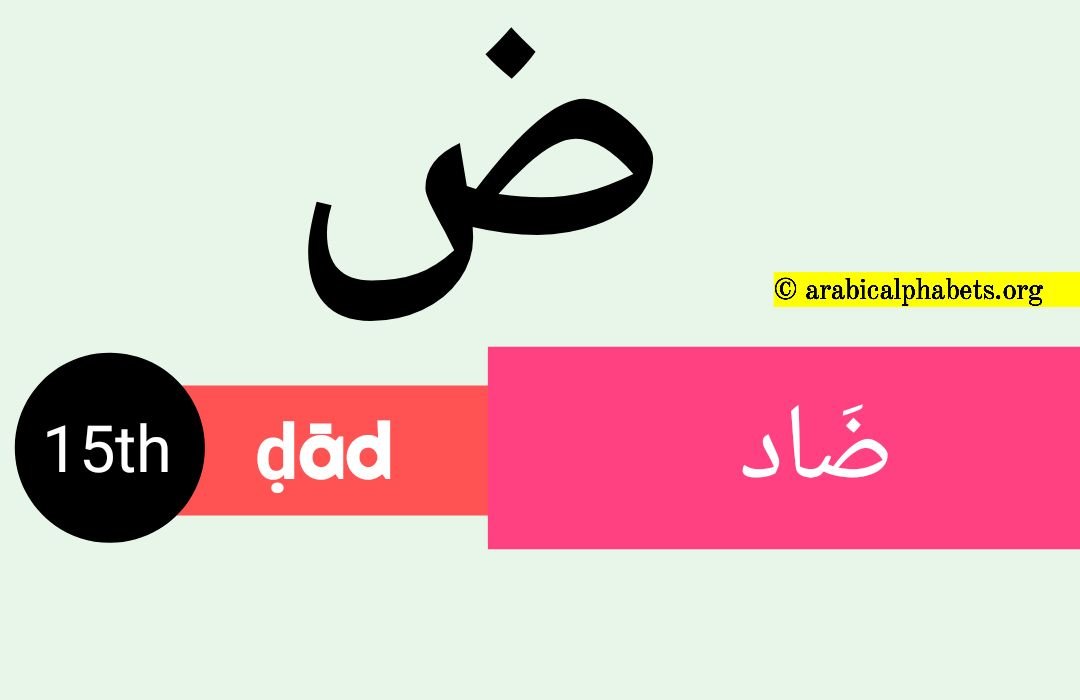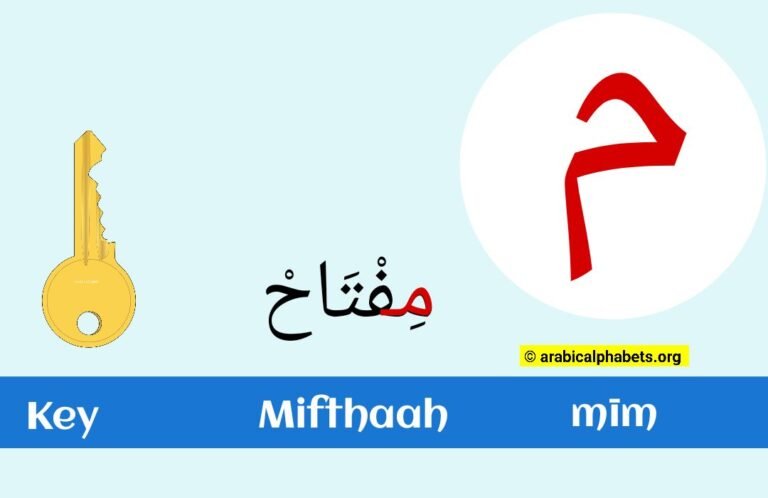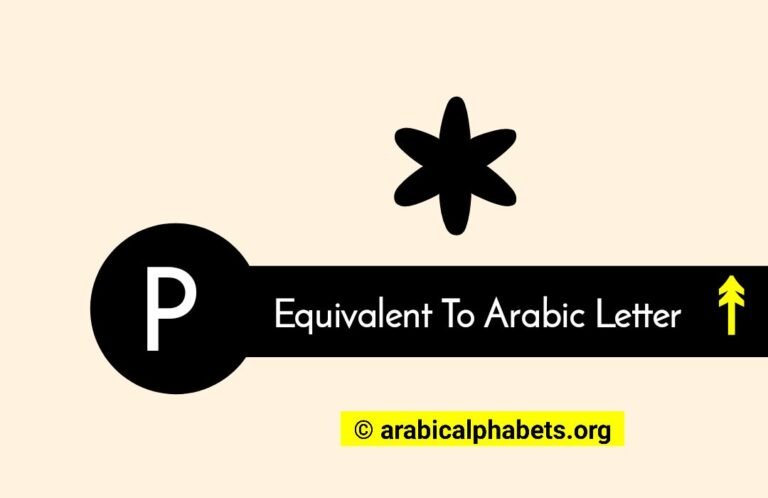Fifteenth Arabic Alphabet Letter
Have you ever found yourself on a quest to unravel the mysteries of the Arabic alphabet? You may be a language enthusiast or simply curious about world cultures. Well, look no further as we present the answer to your burning question: What is the 15th letter of the Arabic alphabet?
But wait, there’s more! Not only will we reveal this elusive letter through an intriguing photo, but we will also provide you with the complete order of all 28 letters. So buckle up and embark on this linguistic journey with us as we dive into the fascinating world of Arabic script.
Fifteenth Arabic Alphabet Letter Full Details Here
Welcome to an in-depth exploration of the fifteenth letter of the Arabic alphabet, “Ḍād” (ض). This comprehensive guide will delve into the pronunciation, written form, usage, and cultural significance of this letter within the Arabic language.
1. Introduction to Ḍād (ض): “Ḍād” holds the fifteenth position in the Arabic alphabet and plays an integral role in shaping the language’s phonetics and structure.
2. Pronunciation of Ḍād: The pronunciation of “Ḍād” involves producing a unique sound not found in English. It’s characterized by constriction of the tongue against the roof of the mouth.
3. Written Form of Ḍād: The written form of “Ḍād” (ض) showcases a distinctive shape that differentiates it from other letters. Its form is visually captivating.
4. Positional Variations: “Ḍād” can appear in various positions within Arabic words: initial (beginning), medial (middle), and final (end). Its form adjusts based on its position within a word.
5. Vocabulary and Usage: Numerous Arabic words incorporate the letter “Ḍād.” As you expand your vocabulary, you’ll encounter words like “ضوء” (light), “ضحك” (laughter), and “ضروري” (essential).
6. Grammar and Structure: Understanding the role of “Ḍād” in Arabic grammar is essential for constructing coherent sentences. It influences verb conjugations, noun-adjective agreements, and overall sentence structure.
7. Cultural and Linguistic Significance: “Ḍād” extends beyond its linguistic role to hold cultural importance. Exploring its presence in poetry, literature, and expressions provides insights into Arabic communication and cultural expression.
8. Calligraphic Expressions: The distinct form of “Ḍād” lends itself well to Arabic calligraphy. Various calligraphic styles allow artists to interpret their designs creatively.
9. Practice and Recognition: Enhance your familiarity with “Ḍād” by practicing its isolated form and appearance within words. Regular exposure to Arabic text sharpens your recognition skills.
10. Learning Resources: To deepen your understanding of “Ḍād” and other Arabic letters, explore textbooks, online courses, and language apps, and engage in language exchange platforms.
11. Your Journey of Mastery: By immersing yourself in the intricacies of the Arabic letter “Ḍād,” you’re engaging with a cornerstone of the language’s structure. Each letter you learn adds to your linguistic proficiency and cultural appreciation.
As you continue your Arabic learning journey, remember that every letter contributes to your ability to communicate effectively and to embrace the beauty of Arabic expression. By embracing the intricacies of “Ḍād,” you’re unlocking a deeper connection with the Arabic-speaking world and enriching your understanding of language and culture.
Table Description -> A – Serial Number, B – Isolated Form, C – Trans-literation, D – Letter name, E – Letter Name In Arabic Script.
| A | B | C | D | E |
|---|---|---|---|---|
| 15 | ض | ḍ | ḍād | ضَاد |
Get 1 to 28 Arabic Letters Order
Table Description -> A – Serial Number, B – Isolated Form, C – Trans-literation, D – Letter name, E – Letter Name In Arabic Script.
| A | B | C | D | E |
|---|---|---|---|---|
| 1 | ا | ā | ʾalif | أَلِف |
| 2 | ب | b | bāʾ | بَاء |
| 3 | ت | t | tāʾ | تَاء |
| 4 | ث | th | thāʾ | ثَاء |
| 5 | ج | j | jīm | جِيم |
| 6 | ح | ḥ | ḥāʾ | حَاء |
| 7 | خ | kh | khāʾ | خَاء |
| 8 | د | d | dāl | دَال |
| 9 | ذ | dh | dhāl | ذَال |
| 10 | ر | r | rāʾ | رَاء |
| 11 | ز | z | zāy | زَاي |
| 12 | س | s | sīn | سِين |
| 13 | ش | sh | shīn | شِين |
| 14 | ص | ṣ | ṣād | صَاد |
| 15 | ض | ḍ | ḍād | ضَاد |
| 16 | ط | ṭ | ṭāʾ | طَاء |
| 17 | ظ | ẓ | ẓāʾ | ظَاء |
| 18 | ع | ʿ | ayn | عَيْن |
| 19 | غ | gh | ghayn | غَيْن |
| 20 | ف | f | fāʾ | فَاء |
| 21 | ق | q | qāf | قَاف |
| 22 | ك | k | kāf | كَاف |
| 23 | ل | l | lām | لاَم |
| 24 | م | m | mīm | مِيم |
| 25 | ن | n | nūn | نُون |
| 26 | ه | h | hāʾ | هَاء |
| 27 | و | w | wāw | وَاو |
| 28 | ي | y | yāʾ | يَاء |
Mastering the Arabic Alphabet: A Comprehensive Guide to Learning Letters
Learning a new language is an exciting journey, and when it comes to Arabic, understanding its alphabet is the first step towards unlocking its rich linguistic and cultural heritage. “Mastering the Arabic Alphabet: A Comprehensive Guide to Learning Letters” is a resourceful guide designed to provide learners with an in-depth understanding of the Arabic alphabet, its letters, and their nuances. Let’s delve into the full details of what this guide has to offer:
1. Introduction to Arabic Alphabet: The guide introduces you to the alphabet, emphasizing its significance in the language. You’ll gain insights into the structure of the alphabet and its historical importance.
2. Pronunciation Guide: One of the fundamental aspects of learning any alphabet is correct pronunciation. This guide offers a comprehensive pronunciation guide, teaching you how to accurately articulate each letter’s distinct sounds.
3. Letter Forms and Variations: Arabic letters take different forms depending on their position within a word. The guide explains each letter’s initial, medial, and final forms, ensuring you understand how to write and recognize them in context.
4. Step-by-Step Learning: Each letter is introduced systematically, providing step-by-step instructions on writing and pronouncing it. This method enables you to establish a strong base as you advance through the sequence of letters in the alphabet.
5. Vocabulary Building: Alongside learning the letters, the guide helps you build a foundational vocabulary by introducing words that incorporate the letters you’re studying. This practical approach aids in immediate application.
6. Cultural Insights: Language and culture are intertwined. The guide goes beyond the letters, offering cultural insights and historical context that enrich your understanding of the language’s origins and evolution.
7. Interactive Exercises: To reinforce your learning, interactive exercises are included. These exercises test your recognition, writing, and pronunciation skills, ensuring active engagement with the material.
8. Tips for Memorization: Memorizing a new alphabet can be challenging, but the guide provides effective memorization techniques and mnemonics to help you retain the letters effortlessly.
9. Connecting Letters: As you progress, the guide shows how to connect letters to form words. This is a crucial step towards reading and understanding Arabic texts.
10. Practice Resources: The guide includes practice sheets and downloadable resources that allow you to practice writing letters, words, and simple sentences.
11. Progress Tracking: To keep track of your progress, the guide encourages you to document your learning journey. This reflection helps you see how far you’ve come and motivates you to continue.
12. Mastery and Beyond Once you’ve mastered the Arabic alphabet, the guide provides guidance on where to proceed in your language-learning journey, whether advancing to more complex language structures or exploring different dialects.
“Mastering the Arabic Alphabet: A Comprehensive Guide to Learning Letters” is more than just a guide; it’s a roadmap to unlocking the beauty and depth of the Arabic language. Following its comprehensive approach, you’ll build a strong foundation for further Arabic language study and a deeper appreciation for the cultural significance embedded within each letter.
Conclusion Points
In conclusion, our comprehensive exploration of the fifteenth Arabic alphabet letter, “Ḍād” (ض), has unveiled its pivotal role in the tapestry of the Arabic language. We have gained insight into its significance by understanding its pronunciation, written form, and cultural connotations.
As a bridge between language and culture, “Ḍād” exemplifies the intricate connection between linguistic expression and the rich heritage it carries.
As you continue your Arabic language journey, remember that each letter is a stepping stone toward proficiency and cultural immersion.
Embrace the challenges and the beauty of “Ḍād,” for it is key to effective communication and a deeper connection to the Arabic-speaking world. By integrating the lessons learned from “Ḍād,” you’re further enriching your language skills and embarking on a more profound journey of exploration and understanding.
Ten frequently asked questions (FAQs) about the fifteenth Arabic alphabet letter, “Ḍād” (ض):
What position does “Ḍād” (ض) hold in the Arabic alphabet?
“Ḍād” is the fifteenth letter in the Arabic alphabet.
How is “Ḍād” (ض) pronounced?
“Ḍād” is pronounced as a unique sound not present in English. It’s created by placing the tongue against the roof of the mouth and producing a resonant sound.
Describe the written form of “Ḍād” (ض).
The written form of “Ḍād” resembles the English letter “ḍ.” It has a distinct shape that differentiates it from other letters.
In which positions can “Ḍād” (ض) appear within Arabic words?
“Ḍād” can appear in initial, medial, and final positions within words, with its form adapting based on its position.
Can you provide examples of words containing “Ḍād” (ض)?
Certainly! Words like “ضوء” (light), “ضحك” (laughter), and “ضروري” (essential) incorporate the letter “Ḍād.”
How does “Ḍād” (ض) influence Arabic grammar?
Understanding “Ḍād” is crucial for constructing grammatically correct sentences. It plays a role in verb conjugations, noun-adjective agreements, and overall sentence structure.
What cultural significance does “Ḍād” (ض) hold?
Beyond its linguistic role, “Ḍād” holds cultural importance in poetry, literature, and expressions, providing insights into Arabic communication and cultural expressions.
Is “Ḍād” (ض) a part of Arabic calligraphy?
Yes, “Ḍād” is frequently used in Arabic calligraphy due to its distinct shape. Different calligraphic styles allow artists to interpret their designs creatively.
How can I practice recognizing and using “Ḍād” (ض)?
Regular practice of writing “Ḍād” in various word positions and texts enhances your recognition and incorporation of the letter.
Where can I find resources to learn more about “Ḍād” (ض) and other Arabic letters?
Explore textbooks, online courses, language apps, and language exchange platforms to deepen your understanding of “Ḍād” and other Arabic letters.
These FAQs offer an informative overview of the Arabic letter “Ḍād.” By immersing yourself in its intricacies, you’re better equipped to navigate the Arabic language and culture world.






